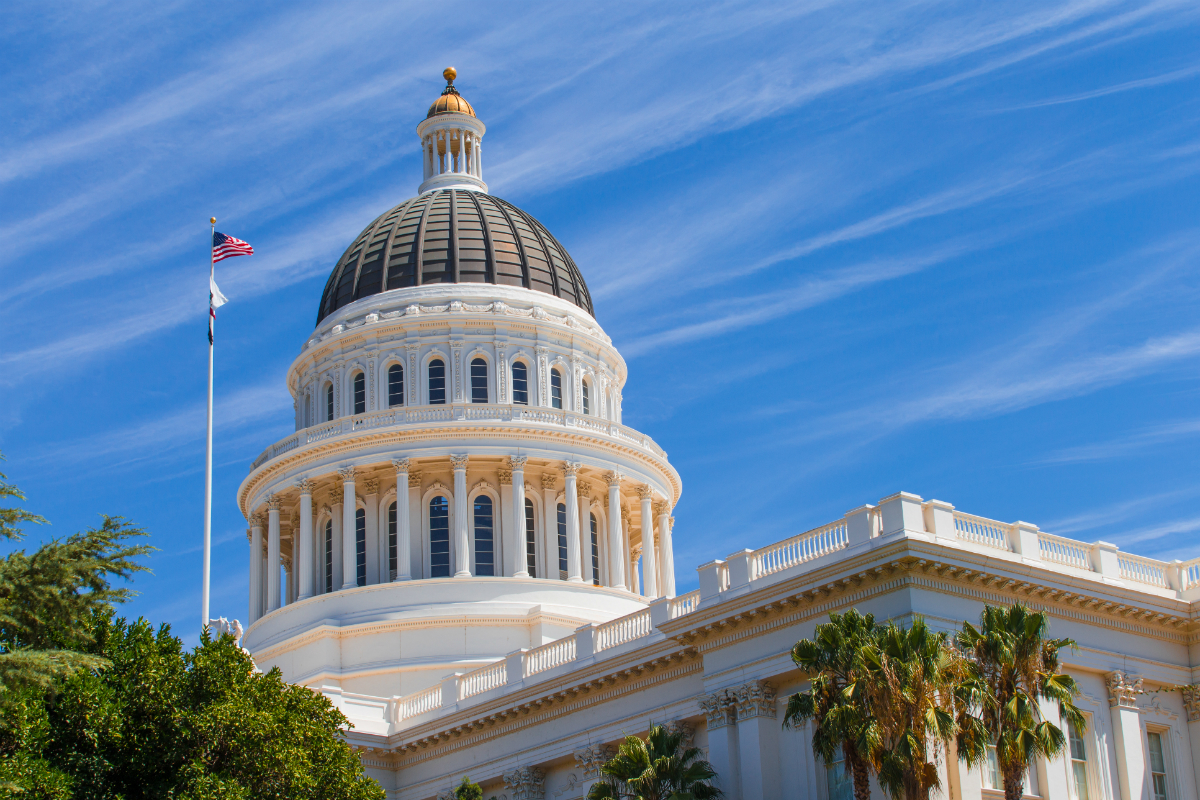On June 27, Gov. Gavin Newsom signed his first state budget act as Governor, wrapping up a 2019–20 budget that invests more than $3 billion above the Proposition 98 guarantee in pension relief and special education.
While the budget invests heavily in ongoing programmatic support, there is no one-time discretionary money in the 2019–20 budget. The budget leaves no maintenance factor obligation or payment in 2019–20, and makes a $687 settle-up payment, leaving no additional outstanding settle up.
During the Budget Conference Committee process, the Assembly proposed language to be included in the budget mirroring that of Assembly Bill 39 (Muratsuchi), which expresses legislative intent to increase the Local Control Funding Formula base grant targets. That language was not included in the final budget, yet AB 39 remains an active bill (co-sponsored by CSBA) – it is currently on the Senate Appropriations Committee’s suspense file.
What’s in the 2019–20 K-12 budget:
Proposition 98:
$81.1 billion ($71.1 billion K-12) total Proposition 98 guarantee for 2019–20, which is a Test 1 year. The guarantee is up $2.7 billion over the prior year; $1.96 billion is allocated for the Local Control Funding Formula to provide a 3.26 percent cost-of-living adjustment.
The budget also contains the result of several settlement agreements between the state and CSBA that restores $686 million in Proposition 98 funding in 2019–20 and protects future guarantees. Read more here.
Public School System Stabilization Account:
$389 million (equal to about $64 per average daily attendance) deposit into the PSSSA — also known as the Proposition 98 rainy day fund. This is the first deposit into this account since it was established along with the statewide rainy day fund as part of Proposition 2 in 2014. And, as a direct result of CSBA-sponsored Senate Bill 751 (Hill & Glazer) from 2017, this deposit will not trigger the school district reserve cap — the PSSSA would need a balance of 3 percent of the K-12 share of Proposition 98 funding (approximately $2.1 billion) to trigger the cap.
Pensions:
With the investments of $2.246 billion in CalSTRS and $904 million in CalPERS (both one-time non-Proposition 98 money), employer contribution rates to both systems will continue to increase in 2019–20 and future years, but the amount of that increase will reduce. The projected contribution rates (as a percentage of payroll) are:
| CalSTRS | ||
| Year | Prior rate ({dc2081ac6c5cc81baef6ff3d8b7134abf68618b2dec130d45a21090cbaafa61c}) | Updated rate ({dc2081ac6c5cc81baef6ff3d8b7134abf68618b2dec130d45a21090cbaafa61c}) |
| 2019–20 | 18.13 | 17.1 (-1.03) |
| 2020–21 | 19.1 | 18.4 (-0.7) |
| 2021–22 (projected) | 18.4* | 18.1* (-0.3) |
| 2022–23 (projected) | 18.4* | 18.1* (-0.3) |
| 2023–24 (projected) | 18.4* | 18.1* (-0.3) |
| CalPERS | ||
| Year | Prior rate ({dc2081ac6c5cc81baef6ff3d8b7134abf68618b2dec130d45a21090cbaafa61c}) | Updated rate ({dc2081ac6c5cc81baef6ff3d8b7134abf68618b2dec130d45a21090cbaafa61c}) |
| 2019–20 | 20.733 | 19.721 (-1.012) |
| 2020–21 (projected) | 23.6* | 22.7 (-0.9) |
| 2021–22 (projected) | 24.9* | 24.6 (-0.3) |
| 2022–23 (projected) | 25.7* | 25.4 (-0.3) |
| 2023–24 (projected) | 26.4* | 26.1 (-0.3) |
| 2024–25 (projected) | 26.6* | 26.3 (-0.3) |
| 2025–26 (projected) | 26.5* | 26.2 (-0.3) |
School facilities:
$1.5 billion in Proposition 51 school facilities funds is released in 2019–20, along with $1.2 million to fund positions at the Office of Public School Construction to expedite application processing.
In the Legislature, Assembly Bill 48 (O’Donnell, D-Long Beach), the Kindergarten-Community Colleges Public Education Facilities Bond Acts of 2020 and 2022, which would place a $13 billion school facilities bond on the March 2020 ballot and an additional bond of as-yet-undefined value on the November 2022 ballot, passed the Senate Education Committee on June 19 and the Senate Governance and Finance Committee on July 3, sending the measure to Senate Appropriations. CSBA supports the bill.
Additional budget highlights:
$645.3 million for special education:
- $492.7 million for Special Education Early Intervention Preschool Grant Program
- Funding allocated to districts on per-pupil basis (per-pupil rate = total amount of funding divided by statewide number of preschool students with exceptional needs)
- Eligible pupils includes 3-, 4-, and 5-year-olds with exceptional needs who have an Individualized Education Program, excluding those enrolled in transitional kindergarten or kindergarten
- Funds meant to supplement existing special education resources
- $152.6 million to equalize Special Education Local Plan Area funding
- Any SELPA with a 2018–19 Base Rate (adjusted for the 2019–20 COLA) below the Statewide Base Target Rate (STR) will be brought up to the STR (approx. $557/ADA)
- Almost 100 SELPAs will receive equalization funding, more than 30 will not
- Ongoing funding for these purposes is contingent upon the passage of special education reform in the 2020–21 budget
$148.5 million to address teacher/administrator shortage and training:
- $89.8 million (one-time) for the Golden State Teacher Grant Program
- For up to 4,487 $20,000 grants to students enrolled in a teacher preparation program that commit to working in a high-need field at a priority school for four years after obtaining a teaching credential
- “High-need fields” include bilingual education, STEM, and Special Education
- “Priority school” is defined as a school with a high percentage of teachers holding emergency-type permits (ex. Credential waivers, short-term staff permits, substitute permits)
- $38.1 million (one-time) for the Educator Workforce Investment Grant Program
- $22.1 million for teacher and paraprofessional training in the areas of social-emotional learning, school climate, computer science and ethnic studies
- $10 million for English Learner Roadmap-related professional development
- $5 million for Special Education-related professional development
- $1 million (over four years) to establish a Computer Science Coordinator at the California Department of Education
- $13.9 million (ongoing, federal funds) for administrator training
- $6.7 million for California Subject Matter Projects
$50 million for Mental Health Student Services Act (Prop 63 funds):
- $50 million in Prop 63 funding ($10 million ongoing) to provide competitive grants to partnerships between county mental health departments and local educational agencies
- A state commission will set the grant program criteria, and award grants based on consideration of level of need and the number of students in the participating LEAs
- The grants are to be used to provide support services including, at a minimum:
- Services provided on school campuses, to the extent practicable
- Suicide prevention services
- Drop-out prevention services
- Outreach to high-risk youth and young adults, including foster youth; youth who identify as lesbian, gay, bisexual, transgender, or queer; and youth who have been expelled or suspended
- Placement assistance and development of a service plan that can be sustained over time for students in need of ongoing services
$300 million (one-time, non-Prop 98) for new or retrofitted full-day kindergarten facilities (eligibility prioritized on Financial Hardship status and free and reduced-price meals).
$180 million to provide 3.26 percent COLA to some categorical programs outside of the LCFF (including Special Education Foster Youth Programs, Child Nutrition, Adult Education Block Grant, American Indian Early Childhood Education, American Indian Education Centers).





